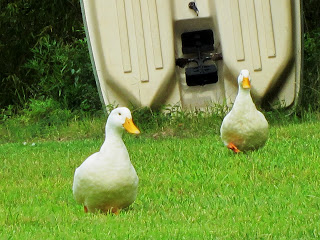I’m forever recommending Iceland as a vacation spot to my
friends. And when I discovered, as I
planned my trip to a conference in Denmark, that Icelandair has free stopovers
on the way from the US to Europe, how could I not take my own advice?
So I spent two wonderful (if jet-lagged) days in Reykjavik
with a friend, and on the second day we took a tour to Thorsmork (in Icelandic,
Þorsmörk: Thor’s Woods)—because
what trip to Iceland is complete without a bus tour?
Thorsmork is a strange forested oasis in the midst of the
most dramatically bleak subarctic landscape I’ve ever seen. I don’t know how it got there, I only know
that once you walk in, you think, “This looks like Virginia.” In fact, I’m told that the Iceland the
Scandinavian settlers saw when they arrived (before they cut down all the
trees) probably looked a lot like it.
They probably arrived and thought, “This looks like Denmark.”
But in order to get there, you have to drive in a jeep or
specially equipped bus over a volcanic wasteland, ford a river at least four
times, and pass under the shadow of Eyjafjallajökull, the volcano famous for stopping air traffic in
Europe for two weeks in 2010. (And
causing my visiting family to evacuate in the middle of the night.)
Have you ever forded a river in a bus? It’s a rather thrilling experience. I was not 100% convinced we weren’t going to
tip over.
The way to Thorsmork used to pass by a beautiful glacial lagoon,
but the jökulhlaup
(the flash flood caused by an eruption under a glacier) from the 2010 eruption
smashed through the natural dam at the lower end of the lake and left only a
steep-walled ravine in its wake. They
discourage jeeps from driving down into it because the glacier is still melting
into the old lakebed, leaving swaths of quicksand in the ash.
The gray ash, by the way, is still visible in the soil two years
later.
I love hiking, and the main attractions of Thorsmork are the
trails frequented by foreign and local campers all summer long. Our tour guide took us up a short but steep mountain
in the middle of the nature reserve (I never thought one could get so hot in a
country where the temp maxes out at 60 degrees!), and the view from the top was
spectacular. To the north, Mýradaljökull, to the east,
Eyjkafjallajökull,
to the west, the sand-colored mountains traversed by the 50 km Landmannalaugur
trail, to the south, the vast gray lava plain running to the sea and the
Westman Islands.
By comparison, Denmark was homier but rather less dramatic
(though the plane my friend and I took to Copenhagen was called Eyjafjalla-jökull!). The conference was in Aarhus, up north on the
Jutland peninsula. I’d been there before
in mid-winter, but it’s much more inviting in the summertime! The view from the train that goes from
Copenhagen to Aarhus looks rather like the American Midwest, only with more
windmills.
And when I visited Himmelbjerget (a 147-m “mountain” beloved
by Danish poets and naturalists since the mid-19th century), I could
pretty easily convince myself I was looking down into Hobbiton.
Some interesting personal observations about my trip to
Denmark:
* Rain puts a damper on everything, especially when one is
drenched by a passing bus 15 minutes before one’s presentation.
* The field of medieval Icelandic studies is rather like a
large village: you might not know everybody, but you’re no more than two
degrees of separation from even the most preeminent of scholars. In the same session in which I (humble young
interloper from the English department) gave my paper, another paper was given
by the granddaughter of the man who pretty much founded 20th century
saga studies.
* Cobblestones, though an aesthetic choice for pedestrian
walkways, are hazardous even when one is completely sober and wearing sensible
shoes.
* When a red-eye train claims that the ride will last four
and a half hours, what that really means is that you experience about 15 twenty-minute
train rides, each one punctuated by people shuffling on and off, conductors
passing through to punch tickets, and the recorded voice interrupting your nap
to announce the “næste
station.”
* Denmark may not have Iceland’s “midnight sun,” but its
summer days are a lot longer than the ones we get back home, and that means
more time for being outdoors and exploring!
* I have become accustomed to the European hostel practice
of requiring guests to rent their linens.
I was unprepared, though, for our hostel in Aarhus to limit “linen” to sheets
and a blanket. If it hadn’t been for a
very kind (and better prepared) fellow conference goer, I would have had to use
my pillowcase for a towel.
* No matter how much I hate the American tourist mentality
that everything should be in English, when the instructions for buying a ticket
and boarding the correct train were all in Danish, I was completely
miffed. I was scolded both on the way to
Aarhus and on the way back for not punching my ticket correctly and my only response
was, “I can’t read Danish!” (the second time uttered rather peevishly because
it was 1:30 in the morning and I couldn’t fathom why the Danes didn’t cater to
a sleep-deprived monoglot like myself).
So, object lesson: bring an umbrella, follow the advice of Hitchhiker’s Guide and always know where
you towel is, and make friends with someone who speaks the language.
And stop in Iceland on your way to Europe.













